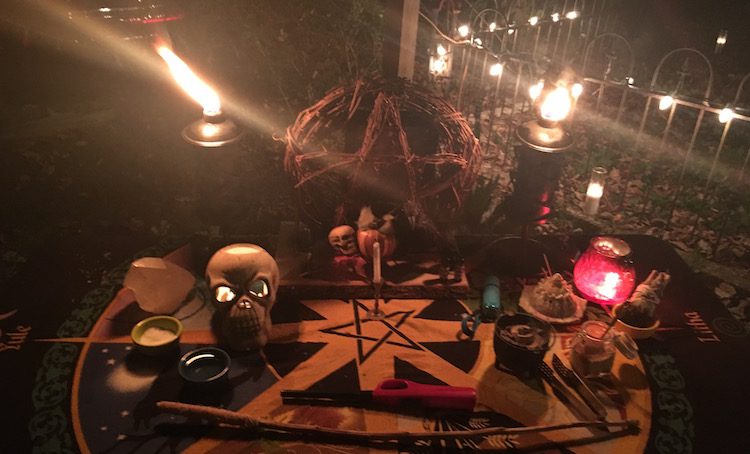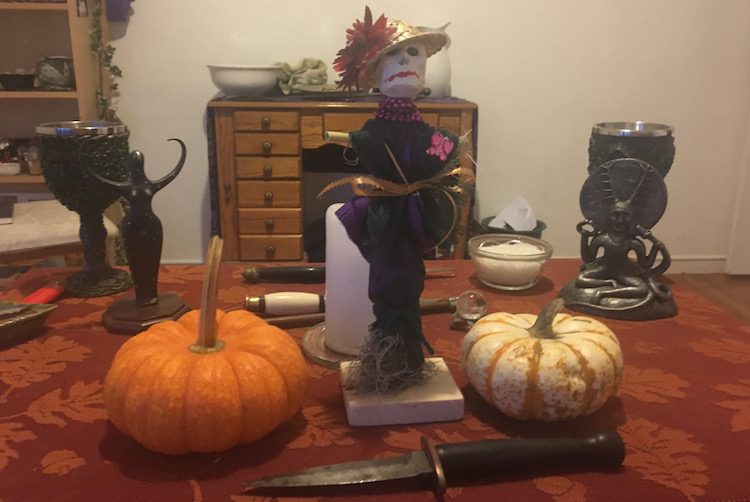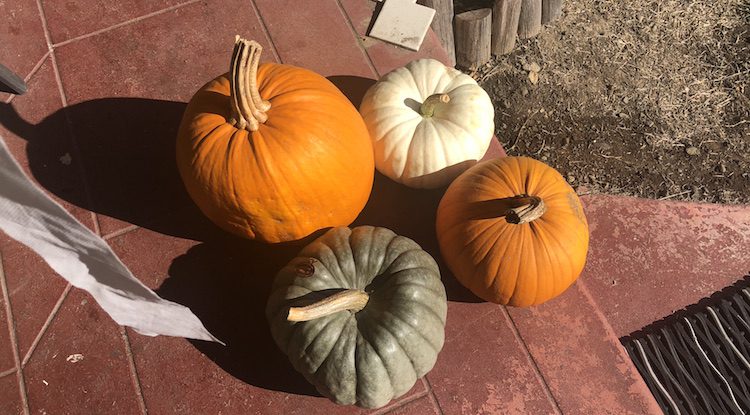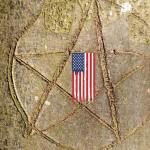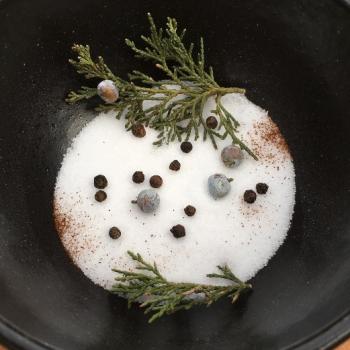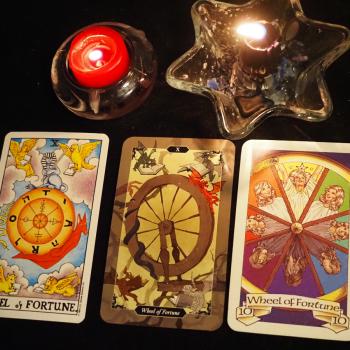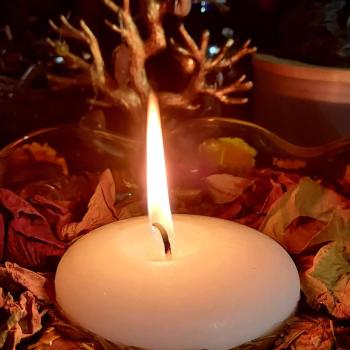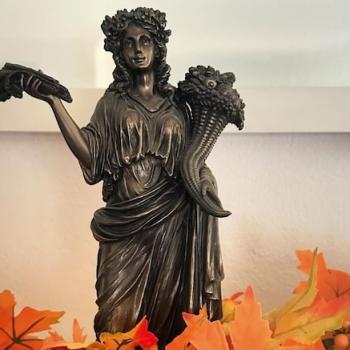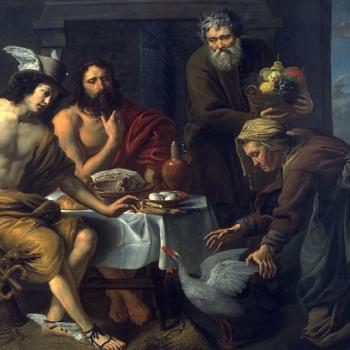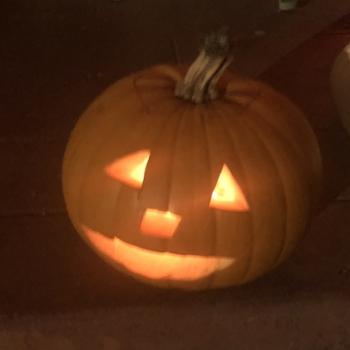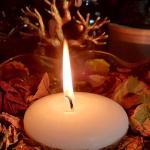There always seems to be so much more Witchcraft and Paganism than usual at Samhain. Some of that is because there’s often just more to do. For many of us there are just more rituals to partake in, and there’s something about Autumn and Halloween that just feels like Witchcraft. You might blame the thinning of the veil for this, or maybe it’s the chillier weather, or shorter days.
Just why so many of us love this season the most will vary from person to person of course, and it should, because there are very few (if any) absolutes in Witchcraft. One of my colleagues here recently pointed out that “Samhain was not a cutesy sabbat” and made light of love spells on the holiday. But love spells have actually been a part of Halloween celebrations for hundreds of years, and while this time of year has been associated with the dead for at least 1200 years, Samhain specifically as a day of the dead is a rather new association.
(My colleague, Cyndi Brennen, assures me she was not being as dismissive as I make her sound, and she’s right! As she says in the comments below “My concern was that I, along with others, were exploring the lighter sides of this day while ignoring the darker aspects” which is completely understandable. Sorry for my issue with reading comprehension Cyndi!)
What I’m here to tell you is that if you want your Samhain to be cutesy, by all means have it be cutesy. The Wheel of the Year is about what you need it to be, it’s not about preconceived ideas or the interpretations of others. Only we get to walk in our shoes, and we should do what most resonates with us. If someone has had several family members die in a given year, maybe they don’t want to participate in a deep and death focused Samhain. That’s fair right?
I know people who absolutely love Halloween, and their Samhain observances more closely resemble All Hallow’s than a Witch ritual, and that’s OK. At their core, sabbats are meant to be celebrations, and while many of us do “work” on them, that’s not required. I’m not harmed if people are more enamored with jack-o-lanterns than their ancestors on Samhain.
And in some ways this was actually me for a couple of years. Ari and I were coven-less and our “Samhain celebrations” mostly consisted of lighting a couple of candles for our beloved dead and then passing out candy to trick-or-treaters. These small things were all preceded by a Michigan’most kick-ass Halloween Party, and we were okay with that. I wouldn’t want to go back to that model, but it was my reality for a couple of years.
Most of us today associate Samhain with the dead, but it’s not a requirement. The idea that the “veil is thin” at Samhain was first articulated by the Scottish anthropologist Sir James Frazer (1854-1941) who wrote in his multi-volume work The Golden Bough that at Samhain “the souls of the departed hovering unseen” were thought to be at ancient celebrations. Frazer was probably on to something because the holiday certainly feels like that, but that’s not an association that was present at Samhain celebrations 2000 years ago (they were far more worried about the fair folk than visiting with dead ancestors).
I had a friend write once that “Witches work with the dead,” but do all Witches work with the dead? Certainly many do, but some of us are far more focused on deity, or magick, or building community in the here and and now. Witches work with all sorts of energies and entities, the dead and our ancestors are only a part of that tapestry, and it’s not something embraced by everyone. Don’t want to work with the dead or visit with Grandma (and I guess that could be dead or alive) at Samhain? Then don’t do it. It’s fine.
New Year’s and Samhain is another one of those associations that we’ve come to accept as some age old tenet, but like the dead specifically at Samhain it’s a rather new idea. The idea that Samhain is the Celtic New Year only dates back to the start of the Twentieth Century. The idea was first put forward by Welsh scholar Sir John Rhys (1840-1915), who interpreted many of the goings on in early November as related to the idea of new beginnings. In Celtic Folkore: Welsh & Manx he writes that “This is the day when the tenure of land terminates, and when servantmen (sic) go to their places. In other words, it’s the beginning of a new year.”
There are Witches that celebrate their new years at Yule, Imbolc, Ostara, and Beltane, and some who celebrate on January 1 (a date established by a Pagan by the way). If Samhain doesn’t resonate with you as the start of a new year you are free to discard it. There is no one “Witch’s New Year,” besides the Wheel of the Year is a wheel. There is no specific starting point, only ones we arbitrarily decide on for whatever reason.
We don’t exist to celebrate the sabbats in a certain way, the sabbats exist for us to celebrate them in whatever way we might like. This Samhain, feast, make love, hand out candy, work with your dead, have a party, toast the Witch’s New Year, celebrate the Autumn, or do absolutely none of those things. As Witches we are beholden only to ourselves and the deities and powers we honor in our lives.
Enjoy your Samhain no matter how you do or do not celebrate.


